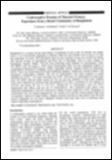| dc.contributor.author | Rahman, Md. Atiqur | |
| dc.contributor.author | Rahman, Md. Mahfuzar | |
| dc.contributor.author | Huq, Sazia | |
| dc.contributor.author | Hossain, Sardar Mahmud | |
| dc.date.accessioned | 2014-03-25T20:39:06Z | |
| dc.date.available | 2014-03-25T20:39:06Z | |
| dc.date.issued | 2014-03-25 | |
| dc.identifier.citation | Dhaka: Anwer Khan Modern Medical College , 2014 | en_US |
| dc.identifier.issn | 2221 836X | |
| dc.identifier.uri | http://hdl.handle.net/123456789/136 | |
| dc.description.abstract | Bangladesh is a country having high density of population in the world. Its fertility rate ranges form 4.1 to 5.49 and life expectancy is 66 years while the total fertility rate of Asia is 2.2 and life expectancy 70 years. This decriptive type of cross sectional servey was carried out among 240 married women of reproductive ae from July to December, 2012 in some villages of Keranigonj upazila, Dhaka. 73 (31%) were practicing some methods of contraception, while 167 (69%) were not using it. OCP (Oral Contraceptive Pill) was the commonest method of contraception followed by Condoms 12 (5%), Injectable 12 (5%), Implant 12 (5%), and Tubectomy 6 (3%) etc. Frequency of contraceptive use was found comparatively low among rural married women despite high level of awareness. Desire for larger family, religious concerns and fear of side effects were the main factors responsible for non users. Religious scholars must play their role in clarifying many aspects regarding contraceptives. | en_US |
| dc.language.iso | en | en_US |
| dc.publisher | Anwer Khan Modern Medical College | en_US |
| dc.subject | Contraception, Reproductive age, Total Fertility rate | en_US |
| dc.title | Contraceptive practice of Married women: experience from a rural community of Bangladesh | en_US |
| dc.type | Article | en_US |

